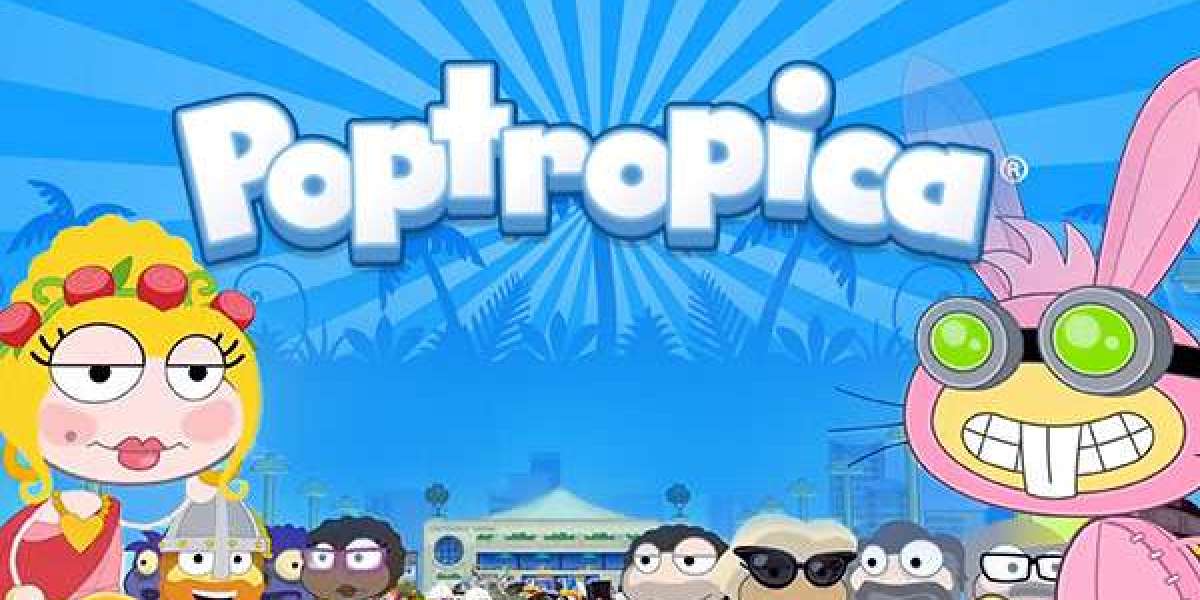In this article, we will explore the history, gameplay mechanics, unique features, islands, and cultural impact of Poptropica. We will also look into why the game continues to hold nostalgic value today and how it has evolved to fit the modern gaming world.
The Origins of Poptropica
Poptropica was officially launched in 2007 under the educational media company Family Education Network, part of Pearson Education. Its creator, Jeff Kinney, envisioned a game that was both fun and safe for children, while also sparking their creativity and curiosity. The game was entirely free-to-play, though it later added membership options that unlocked special features.
From the start, Poptropica stood out because of its narrative-driven gameplay. Instead of mindless mini-games or repetitive challenges, it offered immersive islands—each with its own unique story, mystery, or adventure to solve. Players controlled customizable avatars and traveled from island to island on a blimp, solving puzzles, interacting with characters, and uncovering secrets.
Gameplay and Mechanics
At its core, Poptropica is a point-and-click adventure game. Players explore 2D environments, talk to non-playable characters (NPCs), collect items, and solve puzzles. Unlike many games targeted at children, Poptropica did not oversimplify its challenges. The puzzles often required critical thinking, exploration, and experimentation.
Key features of Poptropica’s gameplay include:
Avatar Customization – Players could create their own character and even copy clothing styles from NPCs and other players. This added a fun, social element to the game.
Island Exploration – Each island presented a unique story. From time travel and mythology to space adventures and detective mysteries, the themes were diverse and imaginative.
Inventory and Items – Players collected items that could be used to solve puzzles. Some were straightforward, while others required creative thinking.
Multiplayer Features – Though not a fully multiplayer game, Poptropica included chat options, mini-games, and common rooms where players could interact.
Safe Environment – With child safety in mind, Poptropica offered pre-scripted chat options and no inappropriate content, making it a secure online space for younger audiences.
The Islands of Poptropica
The most iconic feature of Poptropica is its island-based system. Each island is essentially a self-contained adventure story with its own characters, settings, and puzzles. Some of the most popular islands include:
Early Poptropica Island – The very first island, featuring a simple quest to retrieve stolen items for the island’s residents.
Time Tangled Island – A journey through different eras in history where players must correct time anomalies.
Mythology Island – Inspired by Greek mythology, this island let players interact with gods like Zeus, Athena, and Hades.
Spy Island – A thrilling spy adventure full of gadgets and secret missions.
Shark Tooth Island – A tropical island adventure featuring a shark menace.
Super Power Island – Players gained superpowers and fought villains, giving a superhero twist to Poptropica.
Reality TV Island – A parody of reality shows, where players competed in challenges for fame.
Each island was like a short, interactive storybook. This structure made Poptropica endlessly replayable, as new islands were added over time. By 2015, there were more than 40 unique islands available.
Educational Value
Although Poptropica was primarily designed for entertainment, it also carried educational benefits. Many islands introduced children to concepts in history, literature, mythology, and problem-solving. For example:
Time Tangled Island taught about important historical figures.
Mythology Island introduced players to ancient Greek myths.
Cryptids Island explored the idea of legendary creatures and folklore.
By embedding these themes into fun adventures, Poptropica encouraged learning without players even realizing it. Teachers and parents often praised the game for its ability to combine entertainment with education.
The Social Aspect
While Poptropica was not a traditional multiplayer game like Club Penguin or Roblox, it still had a social component. Players could visit “common rooms,” challenge others in mini-games, and use safe chat options. This sense of limited interaction made the game feel more alive while maintaining a safe environment for kids.
The avatar customization system also allowed for self-expression. Many players enjoyed mixing and matching outfits or copying looks from others, which became a small form of creativity and identity-building.
Cultural Impact and Nostalgia
For those who grew up in the late 2000s and early 2010s, Poptropica holds a special place in their childhood memories. It was part of a golden age of browser-based Flash games, alongside Club Penguin, Neopets, and Webkinz.
Poptropica stood out because of its storytelling and adventure focus, which made players feel like they were part of an interactive comic book. Its colorful art style, catchy background music, and imaginative characters remain deeply nostalgic for many millennials and Gen Z players.
When Adobe Flash was discontinued in 2020, many feared that Poptropica would disappear forever. However, the game transitioned to a new platform and remains available today on web and mobile.
Evolution and Modern Poptropica
The game has undergone many changes since its original launch. After being acquired by Sandbox Networks, Poptropica shifted to mobile platforms and HTML5 versions of the islands. Some classic islands are still available, while others were redesigned or temporarily removed.
Membership options also evolved, offering exclusive costumes, early access to islands, and special abilities. The game even released companion books and merchandise, expanding its brand beyond the screen.
Why Poptropica Still Matters
Even though gaming has advanced to high-definition 3D worlds and complex multiplayer experiences, Poptropica still matters for several reasons:
Childhood Nostalgia – For those who played it growing up, it is a reminder of simpler times.
Educational Storytelling – Few modern games balance learning and entertainment as effectively as Poptropica.
Safe Online Space – In an era where many games include unsafe chat systems, Poptropica remains a child-friendly option.
Unique Creativity – The island system ensures that each adventure feels fresh, unlike repetitive games.
The Legacy of Poptropica
Poptropica’s legacy is more than just a game; it represents a generation’s first experience with online adventures. For many children, it was their introduction to problem-solving, storytelling, and online communities.
Jeff Kinney’s vision of a safe, fun, and creative space for kids has lasted over a decade and continues to inspire new players today.
Conclusion
Poptropica is more than a simple browser game—it is an adventure-filled world of imagination, creativity, and storytelling. From its rich variety of islands to its problem-solving challenges and cultural influence, it has stood the test of time as one of the most beloved children’s games in history.
Even as technology continues to evolve, the magic of Poptropica lives on in both modern versions of the game and the hearts of those who grew up exploring its islands. Whether you’re a returning player filled with nostalgia or a new adventurer just discovering the blimp ride to your first island, Poptropica promises a world of wonder, fun, and learning.






